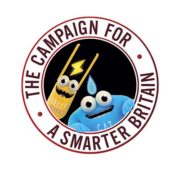We’ve come a long way from the first mobile phones and home computers. So how will technology improve our lives in the future?
Stereotypes would have us believe that technology is the provenance of the young.
But market research has demonstrated that the over-55s – people who remember when mobile phones were the size of a doorstop and home computers were a neighbourhood novelty, not a home-place necessity – are every bit as tech savvy as their younger counterparts.
According to recent research by Deloitte, 71 per cent of people aged 55-75 own an app-enabled smartphone, with face recognition technology – which avoids the need for fiddly passwords – particularly popular.
Meanwhile, another study by Oxford University showed voice-recognition speakers, like Amazon Echo and Google Home, are used more frequently by over-55s than 18-24 year olds.
With technology now well embedded in the lives of the older consumer, what can we look forward to?
Technology enthusiast, Craig Sinclair, says smart gadgets that will make our lives easier and even save money are set to become commonplace in many homes.
“For example, I’ve got smart lighting which I control using an app on my phone,” he says. “I can see it becoming increasingly popular for people who need help to live independently.
“Plus, since I installed it, my energy bills have gone down.”
If Craig were to pair his smart lighting with a smart meter, then not only could he control his lighting from the comfort of his chair, he would also be ideally positioned to save further money on his energy bills by monitoring his usage, and working out where he could cut back on his consumption.
This is all part of a move towards household items becoming smarter across the board. Things like kettles, washing machines and dishwashers will have smart technology built in, and know when to switch on at the most energy efficient – therefore cheapest – times of day. But such innovations in household technology will only be possible once we all have smart meters, and our country is powered by smarter grids. Their near-real time transmission of energy data means suppliers can communicate with smart meters and such appliances to give them the information they need to optimise energy consumption.
Rather than make people’s lives more complicated, advances in smart technology are working to make our lives simpler and more cost effective.
Smart Energy GB is the government backed organisation tasked with informing Great Britain about the benefits of the smart meter rollout.
